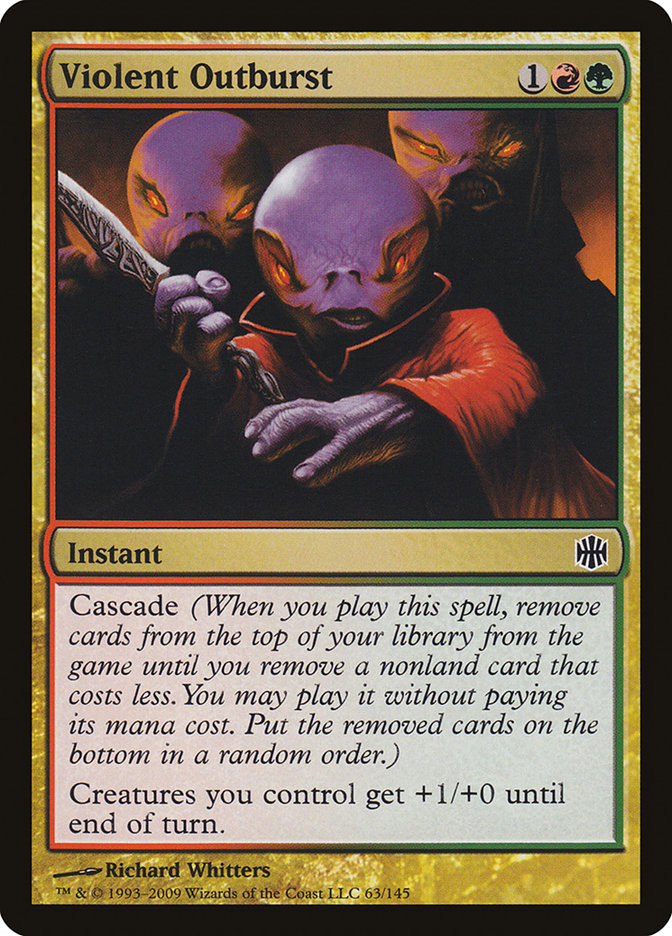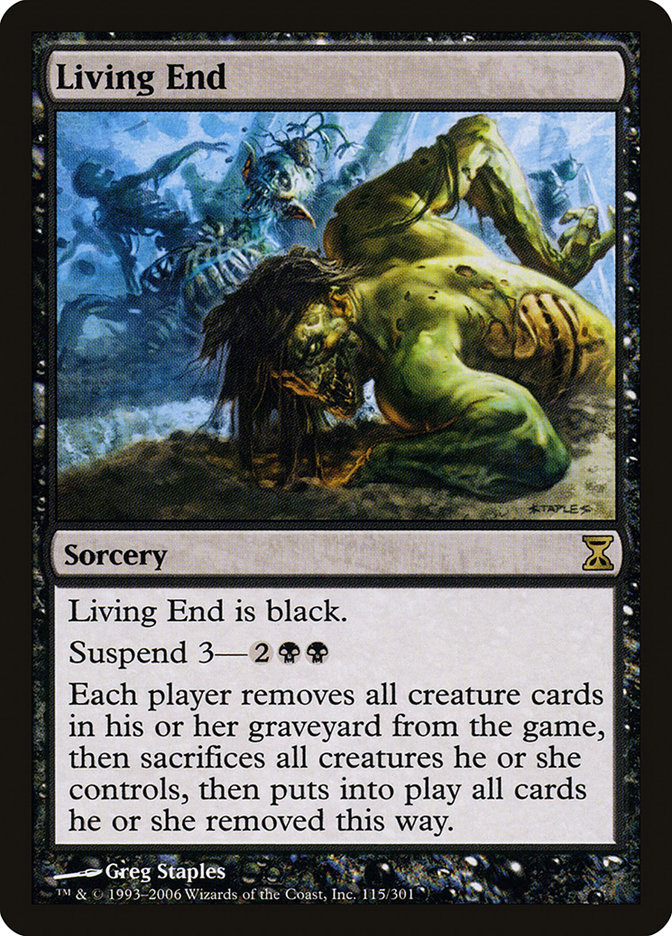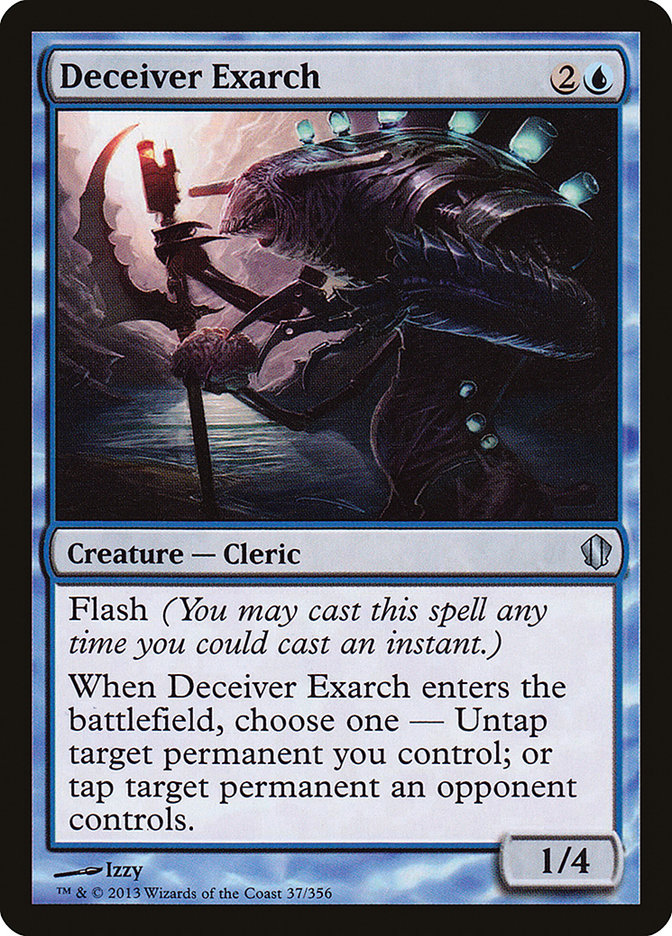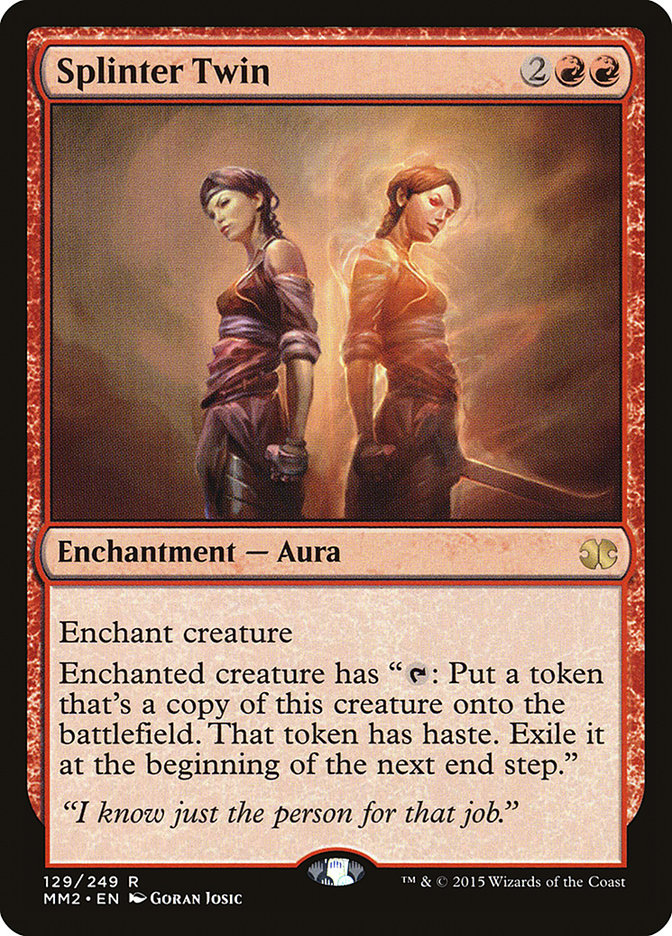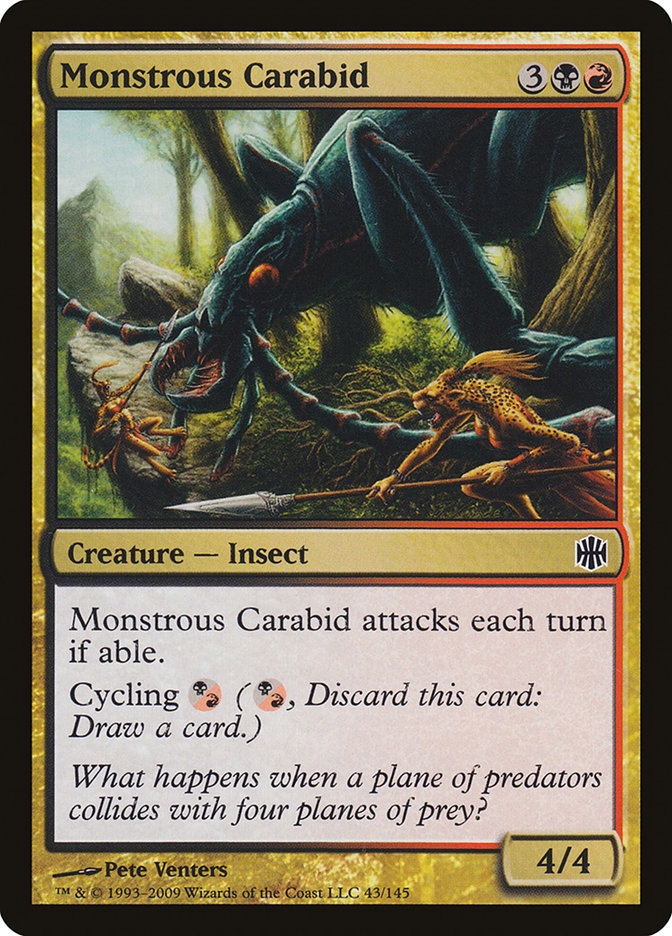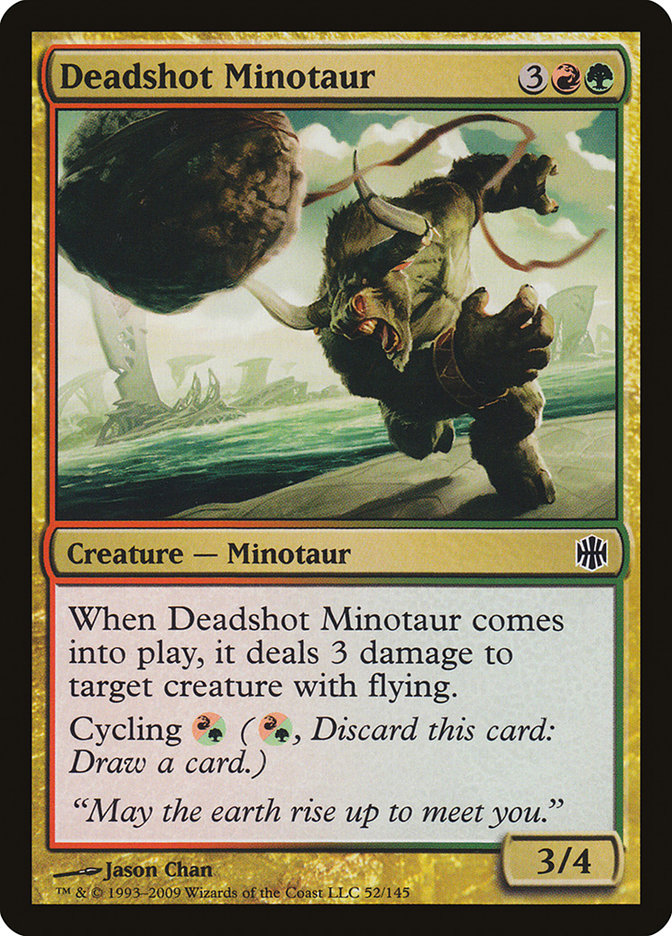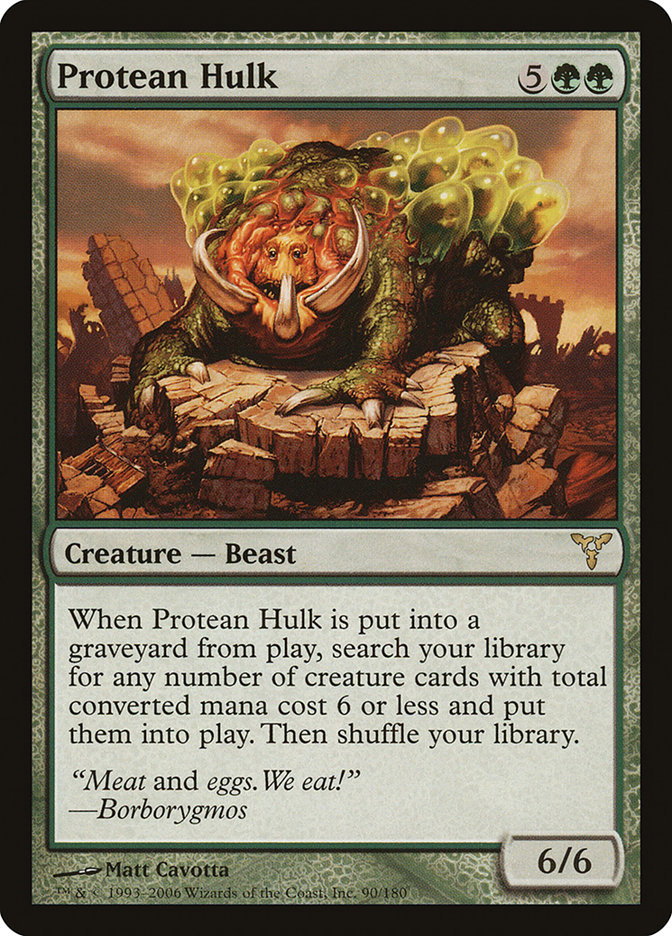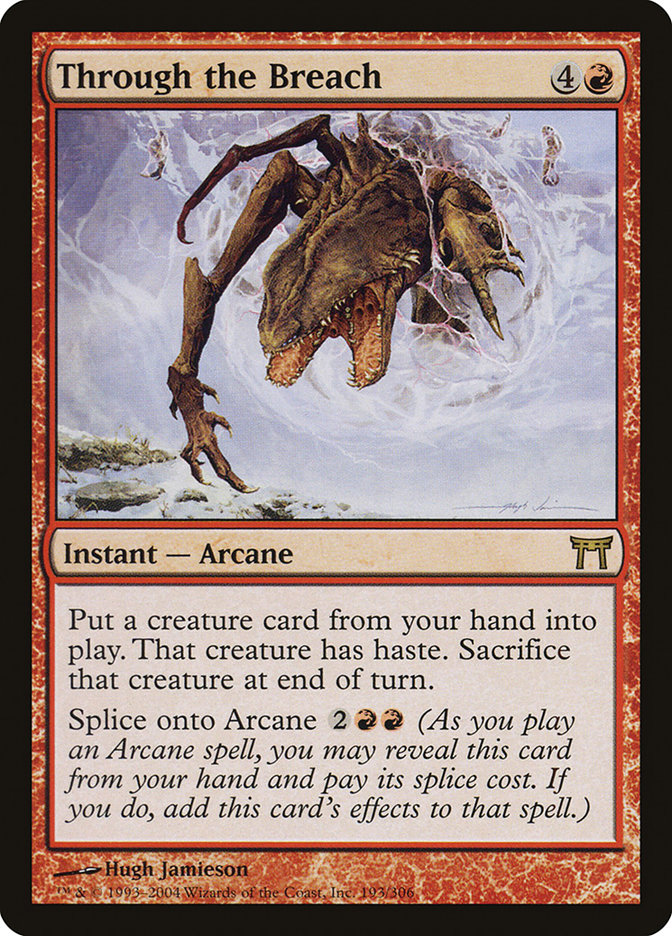Dubious packaging notwithstanding,Modern Masters 2015 is still a major injection of vital Modern staples and a huge foot in the door for players new to the format. As a result, there is likely to be another
spike in Modern tournaments, as waves of new players try their hand at one of the most open and diverse formats in the game.
It doesn’t hurt that the current Modern format has so many different archetypes legitimately playable. And it’s not just that there are N number
of decks, and here’s how you build each one. There is endless room for variation, personalization, and even hybridization.
Just think about how many ways there are to build Affinity.
- Which artifacts do you fuel the engine with? There is far from agreement on what’s necessary.
- Do you support it with Galvanic Blast? Tempered Steel? Thoughtcast? Tezzeret, Agent of Bolas?
- What do you want to tune your sideboard to beat?
And that’s Affinity, one of the most roadmapped decks! Once you start getting into Jeskai Control or Abzan, you are talking about an enormous amount of
variety.
- Scapeshift + Through the Breach
- Splinter Twin + Blood Moon Control
- Gifts Ungiven /Unburial Rites + Tron
- Zoo + Abzan
- Kiki-Jiki + Birthing Pod (RIP)
There are a lot of really powerful things you can do in Modern, each with its own strengths and weaknesses. Frequently, Modern players will combine two
powerful strategies, giving them a second gameplan against players that can exploit the weaknesses of their other strategy.
Recently, I’ve been seeing a sweet, if unlikely, combination of strategies popping up. It starts out like a Living End deck, complete with cycling
creatures and cascade…
However, its solution to graveyard hate? Opponents with fast combos?
Alternatively, it’s a Splinter Twin combo deck with an ingenious solution to decks full of removal and ways to break up the combo! Just cycle a bunch and
Living End your opponent’s Spellskites away!
Although the two strategies seem very different on the surface, the two gameplans actually play into each other surprisingly well. Who needs Serum Visions
when you’ve got cycling cards?!
Serum Visions you can cast at instant speed!
Deceiver Exarch’s ability to tap lands can help force through a Living End, and sometimes you even Living End Kiki-Jiki into play too!
It is certainly ambitious to try to fit anything else inside a Living End deck; but if you’re going to add ten cards, these are some pretty high impact
ones:
Creatures (28)
- 1 Kiki-Jiki, Mirror Breaker
- 1 Twisted Abomination
- 3 Simian Spirit Guide
- 4 Street Wraith
- 1 Pestermite
- 3 Fulminator Mage
- 1 Jungle Weaver
- 2 Architects of Will
- 4 Monstrous Carabid
- 4 Deadshot Minotaur
- 4 Deceiver Exarch
Lands (18)
Spells (14)

Amusingly, the fourth color is the least of our worries despite just eighteen land. Ten one-cost cyclers, four Street Wraiths, and Simian Spirit Guides,
and that’s not even counting the two-cost cyclers…
Obviously, this deck doesn’t have a ton of options for interacting with opponents beyond casting Living End or tapping something with a Deceiver Exarch.
However, solving problems by “just winning” is an underrated strategy. It sounds like a joke, but most people will bend over backwards to figure out a way
to remove an enchantment, kill a hexproof creature, or gain some life, when sometimes they could just win the game more easily than solve that problem
directly.
Remember, if your opponent is at zero life, you have dealt with their Geist of Saint Traft.
If you Hedron Crab your opponent enough times, your Dredgevine deck starts to really not care about their Leyline of the Void.
The tenth poison counter from an Inkmoth Nexus is even more effective of an anti-Stony Silence play than casting Wear//Tear.
This Living End is a blunt instrument, trying to solve most of its problems with one fast kill or another rather than trying overly hard to play the game
the opponent wants to play. When it gets disrupted, it just plays out like a mediocre draft deck. And you know what? That’s actually not that bad a plan
either.
In powerful formats like Modern, Legacy, and Vintage, players can often play so much disruption that they are vulnerable to simply getting attacked by a
bunch of random bodies. Besides, it’s not like we’re short on tactical options:
- Deceiver Exarch and Pestermite give us taps, untaps, and flash.
- Deadshot Minotaur and Jungle Weaver help dominate the skies.
- Fulminator Mage goes after one’s manabase, which is particularly hot when you put a Splinter Twin on it!
- We’ve even got landwalk and regeneration!
The sideboard here is pretty cool, with cards like Ricochet Trap helping get around the restrictions the cascade engine puts on us. The most exciting card,
however, that is one of the most underrated cards in Modern, is this little number, right here:
Gnaw to the Bone is incredibly powerful, basically winning the game outright against one of the best and most popular strategies in the format: Burn. Burn
is typically pretty effective against both Twin and Living End, but Gnaw to the Bone is so unbelievably high impact, drawing a single copy will typically
win us the game despite how challenging the matchup is otherwise.
Often, we’ll have to Gnaw to the Bone for four to six life on turn 3 just to stay alive, but that typically buys us enough time to gain another six to ten
life from the Flashback. It’s not just that Gnaw to the Bone effectively trades with their entire hand. It buys us a ton of time to set up either of our
combos or just find another Gnaw to the Bone, this time for twenty or more each time!
Obviously, not every deck is going to get as much out of Gnaw to the Bone as a deck full of cycling cards, but there are other decks out there that exploit
their graveyard. You can’t just throw it in a Zoo deck since the burn deck can ignore your creatures, but if you can consistently get multiple creatures
into your graveyard by the third turn, you should strongly consider Gnaw to the Bone.
Speaking of getting creatures into the graveyard…
Creatures (12)
Lands (19)
Spells (29)

Zac Elsik took third in an SCG Invitational Qualifier playing a Protean Hulk combo deck, using Footsteps of the Goryo and Through the Breach, in lieu of
Flash.
While Through the Breach on an Emrakul is nearly as effective, Protean Hulk can also be discarded with Faithless Looting, Ideas Unbound, or Izzet Charm,
and then reanimated with Footsteps of the Goryo. Whether from Breach or Footsteps, when the end of the turn rolls around, the Hulk dies, letting us search
up Viscera Seer and Body Double. We can then sacrifice the Body Double copy of the Hulk to the Seer, searching up Reveillark and Mogg Fanatic. Next,
sacrifice the Fanatic to deal one damage, and then the Reveillark to get back the Fanatic and a Body Double of the Reveillark. Repeat ad nauseam.
The second Body Double and second Reveillark are necessary so that you don’t get stuck if you drew one of the copies. A second copy of Mogg Fanatic is
unnecessary because you can just cast it for one mana to get it out of your hand. Just getting it into the graveyard is fine since Reveillark will get it
back later.
Viscera Seer, on the other hand, isn’t a three-of because it has to be. It’s a three-of because it gets to be. It gives us a way to
sacrifice Protean Hulk outright, which is great against Path to Exile, but it also means cobbling together enough mana to cast one (with the help of a
Pentad Prism) is a winning play. Besides, sometimes you just Ideas Unbound Body Double, Reveillark, and Viscera Seer, then cast Footsteps of the Goryo!
Without Mogg Fanatic you may not win during your own end step, however, you do get to scry through your entire library, putting whatever you want on top
(and at will in the future). You also have a dominating board of an unkillable Body Double and Viscera Seer, and threaten to win when you untap and find
your Mogg Fanatic during your upkeep.
There are a lot of random combo pieces in this build, but they fit together in a variety of ways to be much, much more than “dead cards.” For instance, you
can usually loot away a Protean Hulk, and now Body Double is basically the same as a Through the Breach if you have a Viscera Seer.
In recent years, Protean Hulk decks have often been occasional blips that turn a lot of heads because of how fast they are (frequently killing turn 3), but
have yet to breakthrough to the top tier in this era because of two major weaknesses:
-
Consistency – This strategy requires a lot of different things to be going on, often in the right order, and certainly lots of combo cards eating
up space in the deck. -
Graveyard Hate – While this deck has a lot of ways to go off maindeck, they all involve the graveyard. Protean Hulk doesn’t even trigger against
most graveyard hate, let alone the Reveillark/Body Double combos.
Through the Breach + Emrakul is at least a plan against graveyard hate, and I think I’d actually try to make room for a third copy. It’s that important.
There are no shortage of combo decks in Modern at the moment, but one in particular has been getting a lot of attention since Magnus Lantto piloted it to
1st place in the MOCS a week ago.
Creatures (33)
- 4 Llanowar Elves
- 1 Eternal Witness
- 1 Essence Warden
- 4 Heritage Druid
- 4 Nettle Sentinel
- 4 Elvish Visionary
- 4 Elvish Archdruid
- 1 Fauna Shaman
- 3 Ezuri, Renegade Leader
- 1 Spellskite
- 1 Scavenging Ooze
- 4 Elvish Mystic
- 1 Reclamation Sage
Lands (19)
Spells (8)

Basically, as long as Glimpse of Nature has been banned in Modern, people have been watching for the second-coming of Elf Combo. This list, developed with
Hall of Famer Olle Rade, is only somewhat of a combo deck, often just casting Collected Company for Elvish Archdruid and Ezuri, then untapping and
attacking for more than twenty.
Collected Company is an excellent tool against attrition-based strategies like Abzan or Jeskai. With 33 creatures it can hit, we’re getting two over 94% of
the time. Without cards like Regal Force or Craterhoof Behemoth, we’re really just trying to assemble a critical mass to bash our opponents’ skulls in.
We just want to use Nykthos, Shrine to Nyx and Heritage Druid to make a ton of mana so that Ezuri is lethal. Even Ezuri isn’t mandatory; Elvish Archdruid
is a fine backup. Besides, cards like Collected Company, Chord of Calling, and Fauna Shaman mean we’re not exactly short on ways to find a payoff.
Both Collected Company and Chord of Calling make creature sideboard cards more attractive than usual. While Chord of Calling decks have been heeding this
motto for years, I have seen a lot of Collected Company decks lately that use non-creature sideboard cards that could have been creatures. It’s not just
that creatures out of the board help keep your creature count up, it’s that Collected Company being able to hit your sideboard cards dramatically increases
their effectiveness. You’re going to get them in play a lot more often.
Collected Company is perfectly suited for any linear creature deck that has a lot of creatures that scale in relation to how many you have. You know what
deck really wants to have as many of its creatures in play as possible?
Creatures (32)
- 1 Essence Sliver
- 1 Sedge Sliver
- 1 Darkheart Sliver
- 1 Frenetic Sliver
- 1 Necrotic Sliver
- 4 Sinew Sliver
- 3 Homing Sliver
- 1 Sliver Legion
- 1 Mirror Entity
- 1 Bonescythe Sliver
- 1 Sentinel Sliver
- 4 Predatory Sliver
- 4 Galerider Sliver
- 1 Syphon Sliver
- 3 Manaweft Sliver
- 1 Sliver Hivelord
- 2 Diffusion Sliver
- 1 Venom Sliver
Lands (22)
Spells (6)

Many tribal decks are perfect homes for Collected Company since they often already contain enough “hits” to make the Collected Company good. If you have
two Slivers and a Mutavault in play, they might only represent six or seven damage. If you cast Collected Company on your opponent’s end step, you could
easily be attacking for twenty on your turn.
The instant speed nature of Collected Company is also a great way to fight cards like Supreme Verdict, and plays right into the Aether Vial game plan. It’s
not trivial to cast in a deck with just 22 lands, but I can’t help but wonder if there’s a build we can put together that can support 3 or 4.
Bryan’s is light on the Collected Company package, instead focusing on Homing Sliver. Homing Sliver is particularly effective with Aether Vial since we can
Slivercycle each turn and then use the Vial to play what we got for free. Manaweft Sliver, in particular, can also be great for getting enough mana going
in the games where we don’t have Aether Vial.
While this build has an extensive toolbox available to it because of Homing Sliver, it’s also very capable of just coming out very aggressively. Galerider
Sliver into Sinew Sliver into Sedge Sliver into Bonescythe Sliver is twenty attacking in the air on turn 4, and that’s after having already dealt eight
damage!
One deck I haven’t seen people put Collected Company in yet, that I think should probably try it, is a different Aether Vial tribal deck:
Creatures (22)
- 4 Lord of Atlantis
- 4 Merrow Reejerey
- 4 Silvergill Adept
- 4 Cursecatcher
- 2 Phantasmal Image
- 4 Master of the Pearl Trident
Lands (20)
Spells (18)
Sideboard

There are so many great Merfolk Lords, it seems like it’d be easy to relatively consistently hit two. Plus, Merfolk is a strategy that appreciates being
able to leave mana open the way Collected Company does. How to make room, however, is harder than it looks. The solution I came up with revolves around
this card that many do not realize is a Merfolk:
Kiora’s Follower makes it a lot easier to get to four mana to cast Collected Company, but it also does some pretty cool tricks with Aether Vial.
Here’s a first crack at the concept:
Creatures (26)
- 4 Lord of Atlantis
- 4 Merrow Reejerey
- 4 Silvergill Adept
- 4 Cursecatcher
- 4 Master of the Pearl Trident
- 3 Tidebinder Mage
- 3 Kiora's Follower
Lands (22)
Spells (12)

It’s very possible that not playing a little permission maindeck is just crazy. We could trim a Collected Company, a Kiora’s Follower, and a Tidebinder
Mage to make room for three. Spreading Seas is often so tempting to cut, but with eight Lords giving our team islandwalk, it’s too important to our evasion
plan. Besides, it’s pretty solid disruption against some opponents, and always cycles.
There are a couple of other Merfolk well worth considering. Coralhelm Commander might be worth considering if we don’t mind the mana investment. Merfolk
Sovereign is another Lord we could use if we want to just max out on synergy. I probably stay away from Merfolk Assassin + War Barge, however.
Phantasmal Image doesn’t work right with Collected Company since if you CoCo into an empty board and reveal Phantasmal Image and Lord of Atlantis, the
Image dies.
What would I play if GP Charlotte was this weekend?
Let’s be serious…

